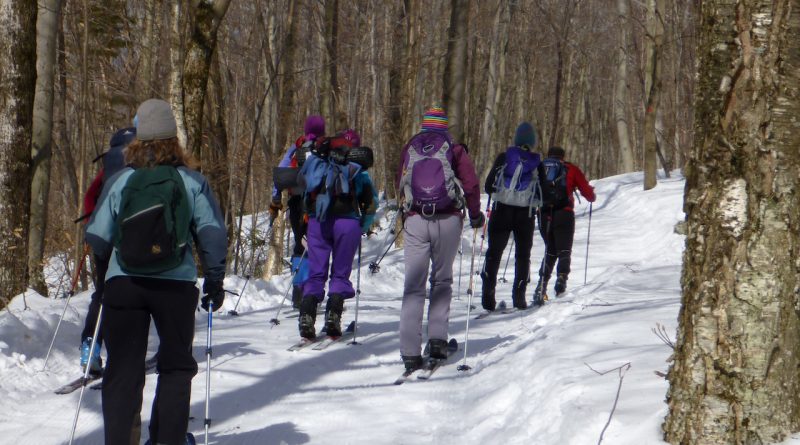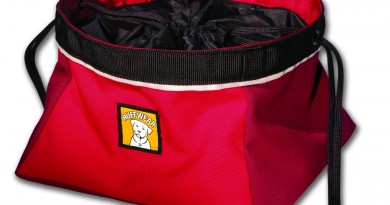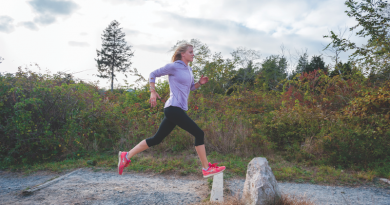Sidecountry-Sweet: The Latest Off-Piste Gear
There’s still time for spring skiing and riding. Here’s what we’re loving right now.
Remember powder and skinning? After a miserable 2015/16 season, winter has come back with a vengeance, giving us a chance to test out some of the new ski and backcountry gear.
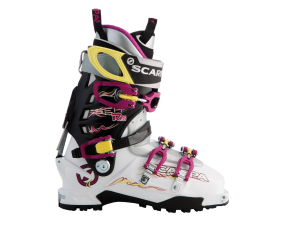 Scarpa’s Maestrale RS and Gea RS, $729 (the Gea women’s model, shown here) have that 120 ex that earns respect on hardpack, ice and steeps. But they also have a ski/walk function and a 37-degree range of motion so you can bootpack out to your favorite sidecountry. The boots also weigh in at just 3lbs., 7oz. so if you are doing more uphill than downhill, you’ll be happy. While there are other newer models on the market that claim to be great alpine- to-backcountry crossovers or backcountry- to-alpine boots, this one is in the sweet spot that could make it your quiver-of-one boot.
Scarpa’s Maestrale RS and Gea RS, $729 (the Gea women’s model, shown here) have that 120 ex that earns respect on hardpack, ice and steeps. But they also have a ski/walk function and a 37-degree range of motion so you can bootpack out to your favorite sidecountry. The boots also weigh in at just 3lbs., 7oz. so if you are doing more uphill than downhill, you’ll be happy. While there are other newer models on the market that claim to be great alpine- to-backcountry crossovers or backcountry- to-alpine boots, this one is in the sweet spot that could make it your quiver-of-one boot.
If you’re someone who has a long drive to the mountain and you’re not one to go into the lodge to put 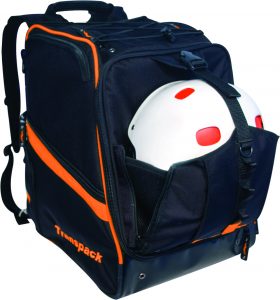 your boots on, (or you are nowhere near a lodge) you will love the Transpack Heated Boot Pro ($199). We do, and not just for the fact that we can plug the bag into the 12-v outlet (formerly known as the cigarette lighter) to keep boots warm on the drive. You can also charge the pack at home and it has three heat settings. Best, it has a snug, low- pro le t but enough pockets and straps to hold all your gear.
your boots on, (or you are nowhere near a lodge) you will love the Transpack Heated Boot Pro ($199). We do, and not just for the fact that we can plug the bag into the 12-v outlet (formerly known as the cigarette lighter) to keep boots warm on the drive. You can also charge the pack at home and it has three heat settings. Best, it has a snug, low- pro le t but enough pockets and straps to hold all your gear.
In most instances in the Northeast, there’s probably not enough avalanche risk to warrant an inflatable ABS airbag (though slides do occur). But know that if 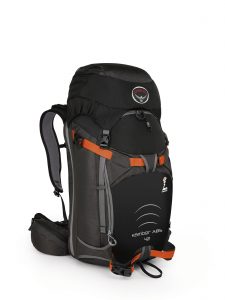 you have the Osprey Kamber ABS- Compatible ($230) pack, you can zip an ABS Vario airbag system to it. The pack comes in two sizes (22 and 42 liters of volume) and can carry skis or snowboards and with multiple straps, there’s the option for A-frame or diagonal carries for skis and horizontal or vertical for boards. We love the fact that it has well-insulated hydration system that doesn’t seem to get clogged with ice.
you have the Osprey Kamber ABS- Compatible ($230) pack, you can zip an ABS Vario airbag system to it. The pack comes in two sizes (22 and 42 liters of volume) and can carry skis or snowboards and with multiple straps, there’s the option for A-frame or diagonal carries for skis and horizontal or vertical for boards. We love the fact that it has well-insulated hydration system that doesn’t seem to get clogged with ice.
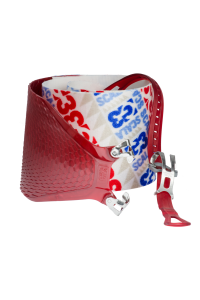 own fairly easily and lie flatter than most skins, something we always appreciate.
own fairly easily and lie flatter than most skins, something we always appreciate.Now that the sun is starting to shine again, don’t forget the sunscreen. Though temperatures may still be cold, snow can reflect 85 to 95 percent of the sun’s ultra violet rays and UV exposure rises by 10 percent for every 1,000 feet above sea level, according to the World Health Organization. Skincare executive Connie Elder developed Peak 10 Skin Colorado Sunscreen ($28 for 4 oz.) with that in mind. The SPF 30 sunscreen uses natural minerals and titanium dioxide to block the rays in a lotion that also contains soothing green tea and aloe. We tried it during those near-record warm sunny days in February and loved the non-greasy feel and the fact that it doesn’t actually absorb into the skin, which makes it non-allergenic. And yes, it works in Vermont.

